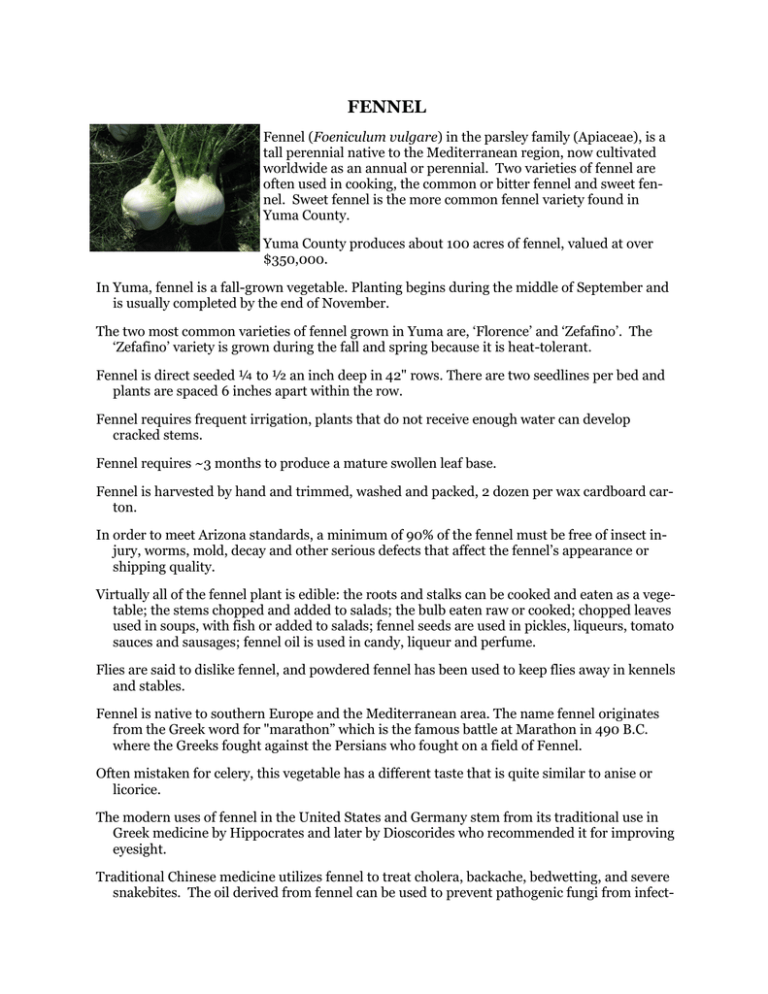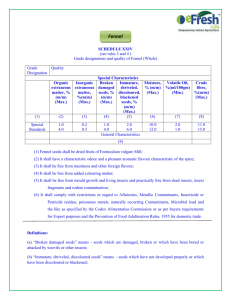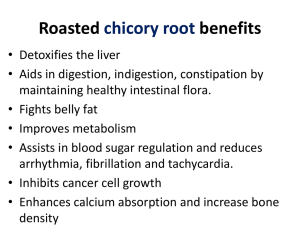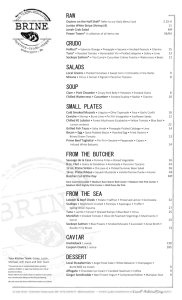FENNEL
advertisement

FENNEL Fennel (Foeniculum vulgare) in the parsley family (Apiaceae), is a tall perennial native to the Mediterranean region, now cultivated worldwide as an annual or perennial. Two varieties of fennel are often used in cooking, the common or bitter fennel and sweet fennel. Sweet fennel is the more common fennel variety found in Yuma County. Yuma County produces about 100 acres of fennel, valued at over $350,000. In Yuma, fennel is a fall-grown vegetable. Planting begins during the middle of September and is usually completed by the end of November. The two most common varieties of fennel grown in Yuma are, „Florence‟ and „Zefafino‟. The „Zefafino‟ variety is grown during the fall and spring because it is heat-tolerant. Fennel is direct seeded ¼ to ½ an inch deep in 42" rows. There are two seedlines per bed and plants are spaced 6 inches apart within the row. Fennel requires frequent irrigation, plants that do not receive enough water can develop cracked stems. Fennel requires ~3 months to produce a mature swollen leaf base. Fennel is harvested by hand and trimmed, washed and packed, 2 dozen per wax cardboard carton. In order to meet Arizona standards, a minimum of 90% of the fennel must be free of insect injury, worms, mold, decay and other serious defects that affect the fennel‟s appearance or shipping quality. Virtually all of the fennel plant is edible: the roots and stalks can be cooked and eaten as a vegetable; the stems chopped and added to salads; the bulb eaten raw or cooked; chopped leaves used in soups, with fish or added to salads; fennel seeds are used in pickles, liqueurs, tomato sauces and sausages; fennel oil is used in candy, liqueur and perfume. Flies are said to dislike fennel, and powdered fennel has been used to keep flies away in kennels and stables. Fennel is native to southern Europe and the Mediterranean area. The name fennel originates from the Greek word for "marathon” which is the famous battle at Marathon in 490 B.C. where the Greeks fought against the Persians who fought on a field of Fennel. Often mistaken for celery, this vegetable has a different taste that is quite similar to anise or licorice. The modern uses of fennel in the United States and Germany stem from its traditional use in Greek medicine by Hippocrates and later by Dioscorides who recommended it for improving eyesight. Traditional Chinese medicine utilizes fennel to treat cholera, backache, bedwetting, and severe snakebites. The oil derived from fennel can be used to prevent pathogenic fungi from infect- ing stored fruits and vegetables. Tea made from crushed fennel seeds has been used as an eyewash. Both the bitter and sweet fennel oils are used as fragrance components in creams, lotions, perfumes, soaps, and detergents. Fennel can also be found in herbal teas or honey syrup and used in a variety of food and beverage products, including alcoholic drinks, meats, baked goods, processed vegetables, pickles, and candies. Fennel grows wild in southern Europe and is widely cultivated throughout the U.S., Great Britain, and temperate Eurasia. The bulbous leaf steam of sweet fennel can be eaten raw, like celery, or cooked. The licoricetasting leaves can be chopped and added to salads, or used in fish soups and sauces. The seeds are used as a flavoring in Italian sausages and poultry stuffing. Fennel found in the market as a “bulb”, with a few tendrils of leaves still remaining. Fennel is a perennial (but usually grown as an annual) that grows to about 3 to 4 feet tall. The leaves are finely divided into thread-like segments and are light green. The bright green stems of sweet fennel are cylindrical and very smooth. Fennel forms typical sheaths at the base of the stems which is the typical part eaten. Kurt Nolte is an area agriculture agent with the Yuma County Cooperative Extension. He can be reached at 928-726-3904.







